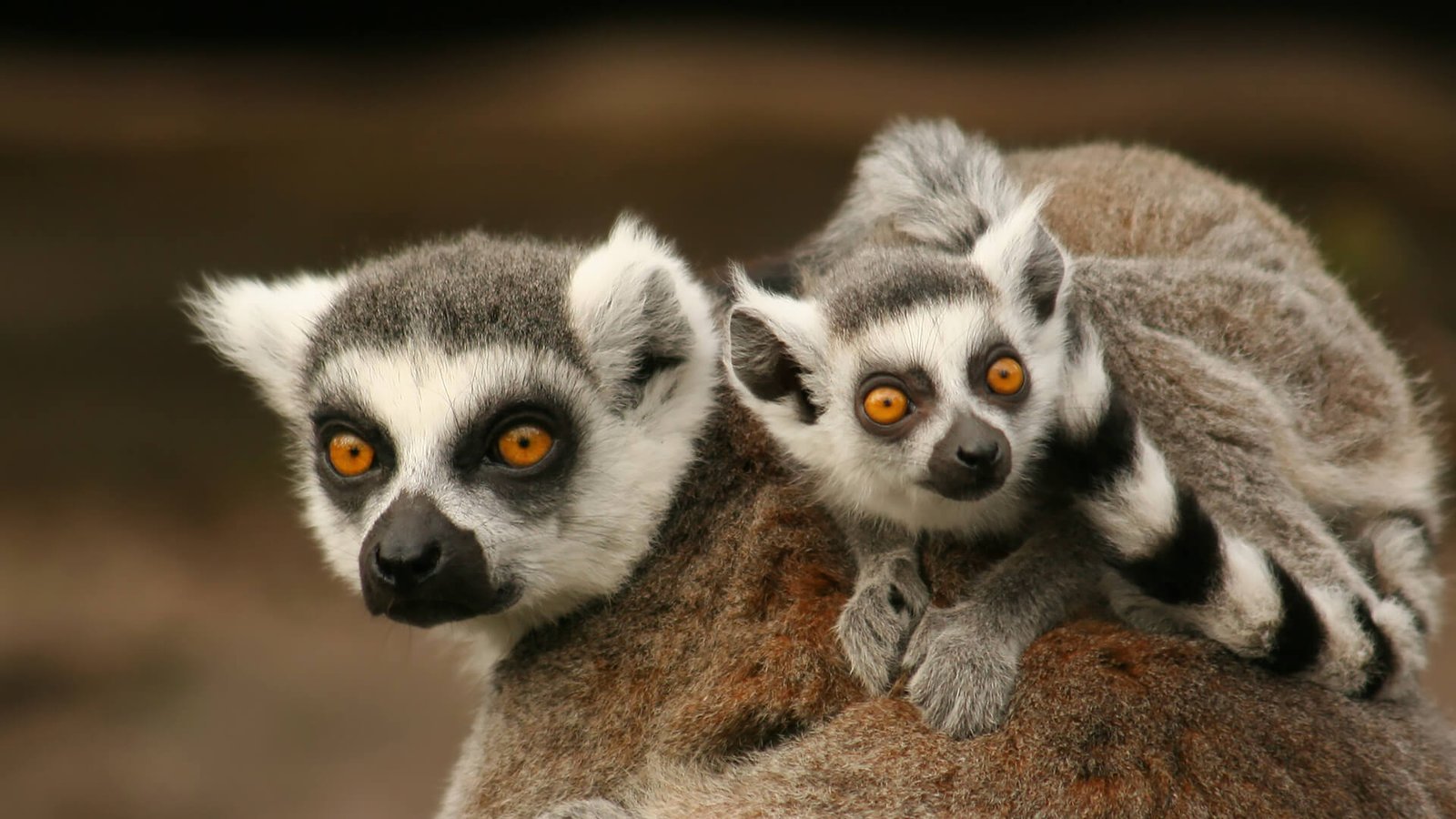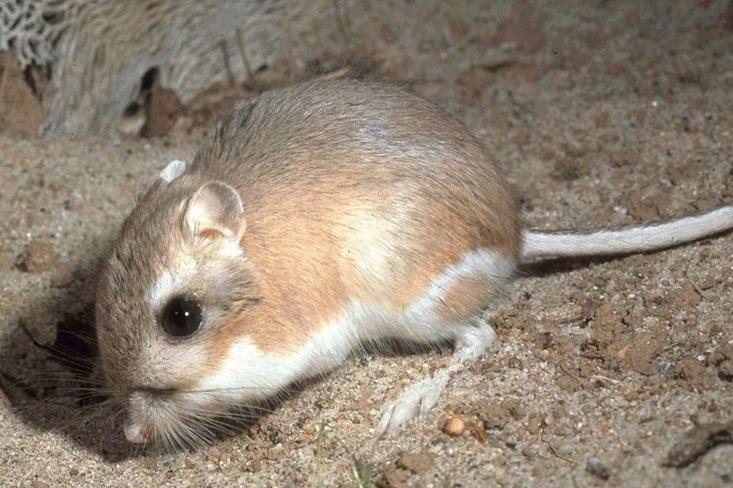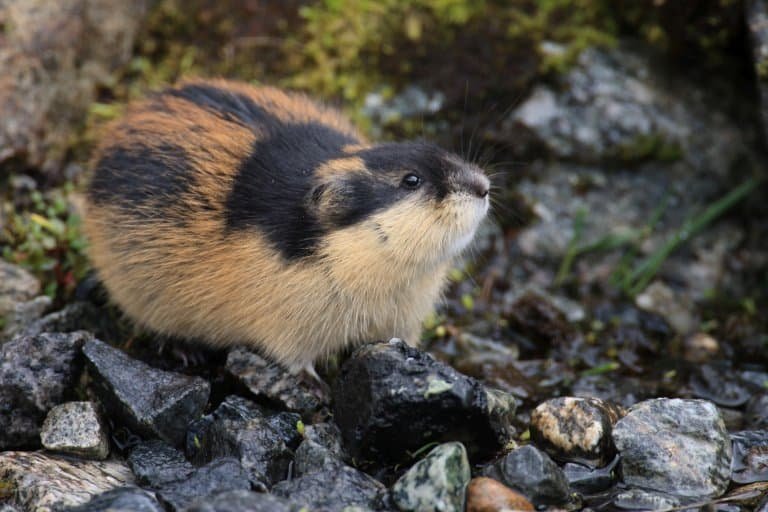Lemur Facts, FAQs, Behaviour, Habitat and Conservation
 Lemur Facts
Lemur FactsLemur Facts | Description | Distribution and Habitat | Conservation | Behaviour and Ecology | Interaction with Human | Cultural | Interesting facts | frequently asked questions about Lemur
Discover the captivating world of the Lemur, a unique and enchanting mammal found exclusively in the lush forests of Madagascar. With their mesmerizing large eyes, agile limbs, and long, bushy tails, Lemurs are nature’s acrobats. These charismatic creatures belong to the primate family and boast a diverse range of species, each with its own distinct charm and beauty. Lemurs are known for their playful nature, agile leaping abilities, and distinctive vocalizations that fill the tropical air. Join us on a journey to unravel the secrets of these incredible creatures and witness the wonders of Lemur life.
Taxonomy of Lemur
| Kingdom | Animalia |
|---|---|
| Phylum | Chordata |
| Class | Mammalia |
| Order | Primates |
| Suborder | Strepsirrhini |
| Family | Lemuridae |
| Genus | Lemur |
| Species | (various) |
Morphology of Lemur
| Body Size | Varies among species, typically small to medium-sized |
|---|---|
| Weight | Ranges from a few ounces to around 20 pounds |
| Lifespan | Varies among species, typically 15 to 25 years |
| Body Structure | Quadrupedal with long limbs and a long tail |
| Fur | Soft and dense, varying in color and pattern |
| Eyes | Large and round, providing excellent night vision |
| Limbs | Agile and adapted for climbing and leaping |
| Hands and Feet | Grasping hands with opposable thumbs, clawed feet |
| Dental Formula | 2.1.3.3 / 2.1.3.3 |
| Special Features | Scent glands for communication, toothcomb for grooming |

Description of Lemur
The Lemur is a fascinating mammal native to the captivating island of Madagascar. It belongs to the primate family and exhibits a wide range of species diversity, each with its own unique characteristics and behaviors. Lemurs are renowned for their playful nature, agile movements, and striking appearance.
One notable feature of Lemurs is their varied body size, which can range from small to medium-sized, depending on the species. They typically weigh a few ounces to around 20 pounds. With an average lifespan of 15 to 25 years, these creatures have adapted to thrive in the lush forests and diverse ecosystems of Madagascar.
Lemurs possess a quadrupedal body structure, with long limbs and a long, bushy tail. Their fur is soft and dense, exhibiting a range of colors and patterns across different species. The Lemur’s large, round eyes provide excellent night vision, allowing them to navigate their arboreal habitats with ease.
Their agile limbs and grasping hands, equipped with opposable thumbs, enable Lemurs to climb trees and leap between branches effortlessly. Their feet are clawed, providing additional grip and stability. These adaptations allow them to explore their forest homes while foraging for food and avoiding predators.
Lemurs have a dental formula of 2.1.3.3 / 2.1.3.3, which refers to the number and arrangement of their teeth. They possess specialized features such as scent glands, which they use for communication and marking territories. Additionally, Lemurs have a unique toothcomb, a specialized dental structure used for grooming their fur.
In conclusion, Lemurs are captivating mammals that showcase the incredible biodiversity of Madagascar. Their playful demeanor, distinctive appearance, and remarkable adaptations make them a delight to study and appreciate.
Distribution and habitat of Lemur
The Lemur is a mammal endemic to the island of Madagascar, located off the eastern coast of Africa. It is here, and only here, that these charismatic creatures can be found. Lemurs have adapted to a wide range of habitats within Madagascar, including rainforests, dry deciduous forests, spiny forests, and montane forests.
Different species of Lemurs exhibit specific habitat preferences. Some are arboreal, spending most of their lives in trees, while others inhabit the ground or a combination of both. Lemurs have evolved to thrive in diverse ecological niches, allowing them to occupy various regions of the island.
Their distribution is influenced by factors such as food availability, competition, and the presence of predators. Each species has its own range and preferred habitat type, ensuring a mosaic of Lemur populations across Madagascar.
Behaviour and Ecology of Lemur
Lemurs exhibit fascinating behaviors and possess unique ecological adaptations. These primates are social animals, often living in groups known as troops or bands. Group sizes can vary, ranging from small family units to larger aggregations, depending on the species.
Within these groups, Lemurs engage in complex social interactions, including grooming, vocalizations, and scent marking. Communication is crucial for maintaining group cohesion and establishing dominance hierarchies.
The Lemur’s diet is primarily herbivorous, with a wide range of preferences. They consume fruits, leaves, flowers, nectar, bark, and even occasional insects. The specific diet of each species depends on its ecological niche and the availability of resources within its habitat.
Lemurs play a vital role in seed dispersal and pollination, contributing to the health and diversity of the ecosystems they inhabit. Their foraging behaviours and movement patterns facilitate the dispersal of seeds across different areas, aiding in forest regeneration.
Conservation of Lemur
Conservation efforts for Lemurs are of critical importance due to their unique status as endemic species to Madagascar and the numerous threats they face. Habitat loss and fragmentation, primarily due to deforestation, pose the most significant challenge to Lemur populations.
Human activities such as slash-and-burn agriculture, logging, and mining have resulted in the destruction of large tracts of Lemur habitat. This loss directly impacts their survival and ability to find food and suitable breeding grounds.
Additionally, Lemurs face threats from hunting and illegal wildlife trade. Some Lemur species are hunted for bushmeat, traditional medicine, or captured for the pet trade. This unsustainable exploitation further endangers their populations.
To address these challenges, conservation organizations and local communities are working together to protect Lemur habitats, establish national parks and reserves, and promote sustainable practices. These initiatives involve raising awareness, conducting scientific research, and implementing measures to mitigate threats to Lemur survival.
Interaction with Human of Lemur
The interaction between Lemurs and humans is complex and varies depending on the context. Historically, Lemurs have played an important role in the cultural and spiritual beliefs of the Malagasy people, the native inhabitants of Madagascar. They are often considered sacred or associated with folklore and traditional ceremonies.
However, the expansion of human activities has increasingly brought Lemurs into direct contact with humans, which can have both positive and negative consequences. Ecotourism, for example, provides opportunities for people to observe Lemurs in their natural habitats, generating income for local communities and raising awareness about their conservation.
On the other hand, human impacts such as habitat destruction, hunting, and the illegal pet trade have posed significant threats to Lemur populations. These activities disrupt their natural behaviors, reduce their habitat, and fragment their populations, leading to a decline in numbers.
Efforts are being made to promote responsible tourism practices that prioritize the welfare of Lemurs and their habitats. Education and outreach programs aim to foster a sense of stewardship among local communities and visitors, emphasizing the importance of conserving these unique creatures for future generations.
Cultural and Historical Significance of Lemur
Lemurs hold cultural and historical significance in the traditions and folklore of Madagascar. The Malagasy people, deeply connected to their natural surroundings, have incorporated Lemurs into their myths, legends, and spiritual beliefs.
In Malagasy culture, Lemurs are often revered and considered sacred. They are believed to possess supernatural powers, acting as intermediaries between the human and spiritual realms. Lemur motifs and symbols can be found in various forms of traditional art, including woodcarvings, textiles, and paintings.
These charismatic creatures have also captured the imagination of people worldwide, becoming icons of Madagascar’s unique biodiversity. Their distinct appearance, playful nature, and ecological importance have made them ambassadors for conservation efforts on the island.
Recognizing the cultural and historical significance of Lemurs, conservation initiatives often integrate local traditions and knowledge, seeking to involve communities in protecting these emblematic animals. By blending conservation goals with cultural appreciation, there is a greater chance of fostering long-term sustainable practices that benefit both Lemurs and the people who coexist with them.
Explanatory Notes for Lemur
- The Lemur is a primate native to Madagascar and is considered one of the most iconic and unique mammal groups found on the island.
- Lemurs are characterized by their diverse species, ranging in size, appearance, and behaviors. They exhibit adaptations to various habitats, including rainforests, dry deciduous forests, and montane forests.
- Lemurs are known for their exceptional agility and climbing abilities. Their long limbs and grasping hands with opposable thumbs allow them to navigate trees with ease.
- These mammals have a specialized toothcomb, a dental structure used for grooming their fur. It helps them maintain cleanliness and remove parasites.
- Lemurs are primarily herbivorous, consuming a varied diet of fruits, leaves, flowers, and bark. Some species may supplement their diet with insects or small vertebrates.
- Communication among Lemurs is essential for social bonding and maintaining group cohesion. They use vocalizations, scent marking, and body language to convey messages within their troops.
- Lemurs exhibit a range of social structures, from solitary species to those living in large multi-male multi-female groups. Group dynamics vary depending on the species and their ecological requirements.
- These primates have a unique reproductive system. Most Lemurs have seasonal breeding patterns, and females often have multiple births, giving rise to twins or occasionally even triplets.
- Lemurs play a crucial role in seed dispersal and pollination. By consuming fruits and flowers, they aid in the regeneration of forests and contribute to the overall health and biodiversity of their ecosystems.
- Lemurs face numerous threats to their survival, including habitat loss due to deforestation, hunting, and the illegal pet trade. Conservation efforts are crucial to protecting these remarkable creatures and preserving their habitats
Interesting facts about Lemur
- Lemurs are found only on the island of Madagascar, making them endemic to this unique ecosystem.
- There are over 100 different species of Lemurs, each with its own distinct characteristics and adaptations.
- Lemurs have a highly developed sense of smell, using scent marking to communicate with others and establish territories.
- The smallest Lemur species, the Madame Berthe’s mouse lemur, can fit in the palm of a hand and is one of the world’s smallest primates.
- Lemurs exhibit a diverse range of vocalizations, including loud calls, territorial cries, and gentle purring sounds.
- Some species of Lemurs have a unique adaptation called “heterochromia,” where their eyes have different colors, such as one blue eye and one green eye.
- The ring-tailed Lemur is perhaps the most recognizable species, known for its distinctive black and white striped tail and lively social behavior.
- Lemurs have a grooming behavior known as “sunbathing,” where they sit with their arms and legs outstretched, absorbing the warmth of the sun.
- The Aye-aye Lemur has an elongated finger used for tapping on trees to locate grubs, which it then extracts using its specialized teeth.
- Lemurs exhibit an incredible variety of fur colors and patterns, ranging from the vibrant red fur of the red ruffed Lemur to the striking black and white coat of the Verreaux’s sifaka.
General queries or frequently asked questions about Lemur
Q: What is the habitat of Lemurs?
A: Lemurs inhabit various habitats in Madagascar, including rainforests, dry deciduous forests, spiny forests, and montane forests. Their specific habitat depends on the species and their ecological preferences.
Q: Are Lemurs only found in Madagascar?
A: Yes, Lemurs are endemic to the island of Madagascar. They are not found naturally in any other part of the world.
Q: How many species of Lemurs are there?
A: There are over 100 known species of Lemurs, each with its own unique characteristics, behaviors, and adaptations.
Q: What do Lemurs eat?
A: Lemurs are primarily herbivorous, and their diet consists of a variety of fruits, leaves, flowers, nectar, bark, and occasionally insects or small vertebrates, depending on the species.
Q: Are Lemurs endangered?
A: Yes, many species of Lemurs are endangered or critically endangered. Habitat loss, hunting, and the illegal pet trade are major threats to their survival.
Q: Do Lemurs live in groups?
A: Yes, Lemurs exhibit a range of social structures. Some species live in small family units, while others form larger groups known as troops or bands.
Q: Do Lemurs have any predators?
A: Lemurs have predators such as fossas, Madagascar’s largest carnivorous mammal, as well as birds of prey, snakes, and some introduced species like feral cats and dogs.
Q: How long do Lemurs live?
A: The lifespan of Lemurs varies among species. On average, they live between 15 to 25 years in the wild, depending on factors such as habitat conditions and predation risks.
Q: Can Lemurs swim?
A: While Lemurs are agile climbers and leapers, most species are not strong swimmers. However, there are some exceptions, such as the black-and-white ruffed Lemur, which is known to swim when necessary.
Q: Do Lemurs have any cultural significance?
A: Yes, Lemurs hold cultural significance in Malagasy folklore and traditions. They are often considered sacred and associated with spiritual beliefs and ceremonies.
Q: Are Lemurs monkeys?
A: No, Lemurs are not monkeys. They belong to the primate order, but they are part of a different suborder called Strepsirrhini, which is distinct from monkeys and apes.
Conclusion
In conclusion, Lemurs are captivating and unique mammals that inhabit the island of Madagascar. With their distinctive appearance, diverse species, and remarkable adaptations, they have become icons of Madagascar’s biodiversity. Lemurs display a wide range of behaviors and ecological adaptations, showcasing their agility, social interactions, and specialized feeding habits. However, Lemurs face numerous threats to their survival, including habitat loss, hunting, and the illegal pet trade.
Conservation efforts are crucial for protecting Lemur populations and their habitats. Collaborative initiatives involving local communities, conservation organizations, and responsible tourism practices are essential to ensure the long-term survival of these remarkable creatures. Awareness, education, and sustainable practices play a vital role in mitigating the impacts of human activities on Lemurs and their ecosystems.
The cultural and historical significance of Lemurs is deeply rooted in Malagasy traditions and beliefs. They are revered as sacred creatures and are intertwined with folklore and spiritual practices. Lemurs have also gained international recognition, becoming ambassadors for conservation and highlighting the need to protect Madagascar’s unique biodiversity.
In summary, Lemurs are not only fascinating mammals with their incredible adaptations and behaviors, but they also hold ecological, cultural, and conservation significance. Efforts to conserve Lemurs and their habitats are essential to ensure the survival of these extraordinary creatures and to preserve the rich biodiversity of Madagascar for future generations.












